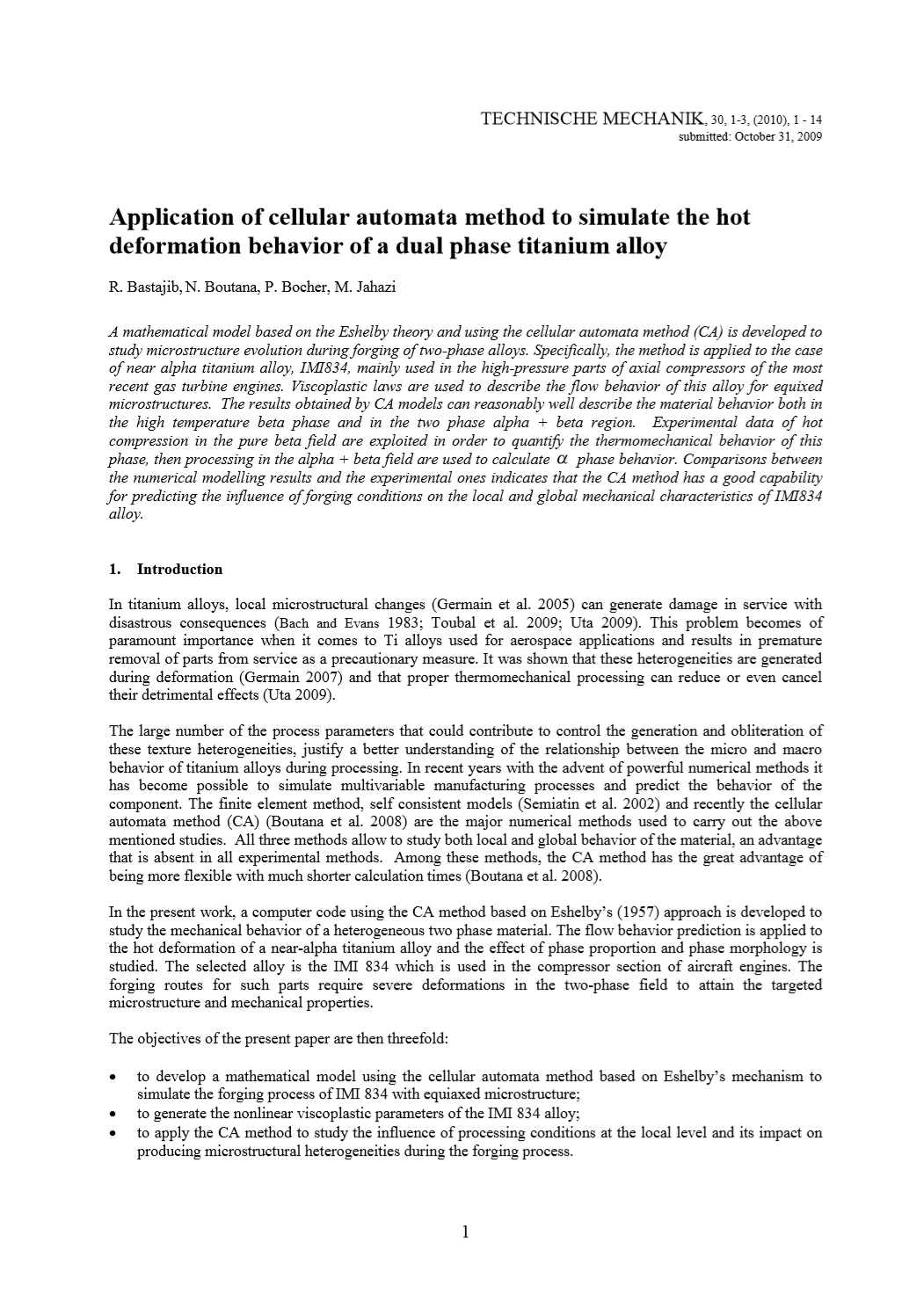Application of cellular automata method to simulate the hot deformation behavior of a dual phase titanium alloy
Abstract
A mathematical model based on the Eshelby theory and using the cellular automata method (CA) is developed to study microstructure evolution during forging of two-phase alloys. Specifically, the method is applied to the case of near alpha titanium alloy, IMI834, mainly used in the high-pressure parts of axial compressors of the most recent gas turbine engines. Viscoplastic laws are used to describe the flow behavior of this alloy for equixed microstructures. The results obtained by CA models can reasonably well describe the material behavior both in the high temperature beta phase and in the two phase alpha + beta region. Experimental data of hot compression in the pure beta field are exploited in order to quantify the thermomechanical behavior of this phase, then processing in the alpha + beta field are used to calculate a phase behavior. Comparisons between the numerical modelling results and the experimental ones indicates that the CA method has a good capability for predicting the influence of forging conditions on the local and global mechanical characteristics of IMI834 alloy.





